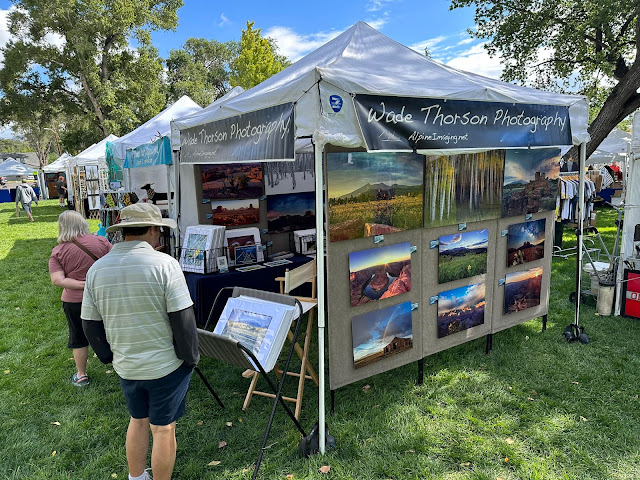The Blood Wolf Moon Eclipse
 |
| The Blood Wolf Eclipse Composite |
Blood moon, wolf moon, eclipse, oh my! I love nightscapes and the buzz all around was the impending Blood Wolf Moon Eclipse that was about to happen. Sunday January 20 beginning around 8:30 the moon began to be blocked by the earth, and turn the moon to a curious reddish color. I still think it's amazing that these events can be predicted to the 'n'th degree. I don't photograph the night sky too much with out some earthly anchor. My usual image has a foreground and stars, with a little light painting thrown around. This kind of photography has fascinated me since making images in high school, with film cameras. This is why I had it in my mind that an ancient Puebloan ruins close to home would make a terrific subject for such an endeavor. The area has dark night skies, away from any light pollution. A little light painting and presto! An image to remember. Except the government ruined my plans. The place was barricaded. I could have poached the site I had scoped out, but didn't want to be that guy, a scofflaw. That, and driving around the barricades seemed really destructive.
I didn't want to be disappointed, after all I was out that night to shoot the moon. I shifted my expectations a little, and chose to stay in an area that was forest service, and thus not protected. Part of being a photographer is managing expectations. Having an idea in your mind's eye is the basis for every creative endeavor, but expecting everything to work out perfectly every time is unrealistic. Instead of packing up when the light is 'bad,' another opportunity could be lurking around the corner.
 |
| Camper and Eclipse |
I drove around on the cinder forest service road in the dark with some driving lights, and settled on an area surrounded by short grasses and small juniper trees. I set up camp and two cameras, each with tripods. With an eye on the sky, I quickly heated up some Kung Pao that I had prepared a night or two before. Well past happy hour, I also cracked a beer and waited for the show to begin.
One camera was pointed at the camper, since ancient ruins were unavailable. And I love a foreground, oh and light painting. I used a wide 24mm lens at f2.8. The other was set up zoomed all the way in to 200mm. I used various apertures and iso's and tried to keep shutter speeds above 1/15s. Any longer runs the risk of the moon movement creating a blur. I kept having to recompose after about five shots, so the moon didn't creep out of the frame. Focusing on the moon at it's brightest, and then shutting off the auto focus is always a good idea. Mirror-lock up and an external release was also used to avoid any camera shake. The moon progression was to last about an hour and a half. I started making images about every two minutes, ending with about 80 images all together. Better to have too many than not enough. It started to get a bit windy toward the end, and some high clouds were being pushed through. I thought I might capture the waning eclipse but at 37 degrees, and the wind getting stiffer, I decided to pack it in. My hands and feet were pretty numb.
 |
| Dawn on Citadel Ruin |
I spent the night, and awoke to the vibrant sunrise peaking through the window. The wind had kicked up to about 60 mph and I thought I might as well head home for breakfast. On the way out the light was just awesome. Sunrise, clouds and a setting full moon kept stopping me. I made a few images from off the side of the road. I made it home before a snow squall caught up to me.
At home I took the images into Lightroom, and analyzed them, and sorted them to the best ones. With the high clouds some were definitely better than others. I settled on 12 that had good luminance and detail. I exported each one as a separate layer into Photoshop into one document, reduced their opacity as I arranged them into a row. I then selected all the layers and used the blend mode 'screen'. I added a vector with the pen tool in a separate layer so I could then further line up the moons, then deleted it when I was satisfied. Flattening the image layers was the last thing to do before saving. I have Photoshop set to stack the new image with the others in Lightroom, then I adjusted whatever aberrations or hot pixels there were from there.
 |
| Cinder Cone Dawn |
What would I have done if the clouds completely obscured the event, you might ask? Shots of tequila.



Comments
Post a Comment